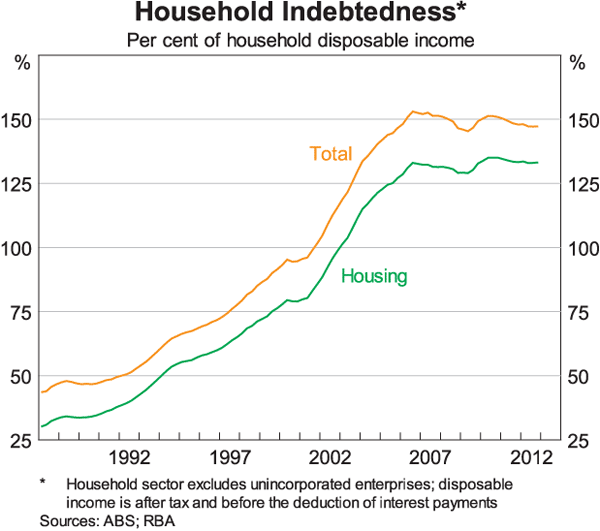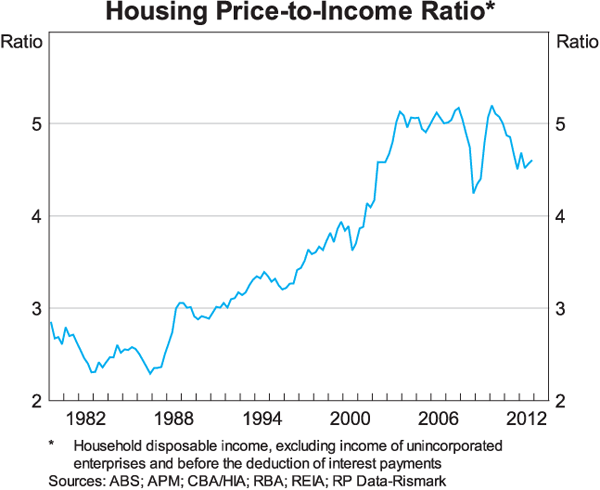Busting the housing bubble myth
Despite constant speculation, Australia does not have a house price bubble. House price growth for the last decade is consistent with household income growth, but with lending rates at historically low levels, policymakers must remain vigilant.
Two weeks ago, Steve Keen put forth the case for an Australian housing bubble. His broad theory that “house price … bubbles are always and everywhere a phenomenon of rising bank leverage, and anywhere that has high and rising levels of household debt (relative to GDP) is a candidate for being a bubble economy” (How to spot a housing bubble before it bursts, October 15).
Although there are exceptions, this line of thinking provides an important insight on investment bubbles and how to recognise them. Bubbles almost always include a rapid rise in debt held by households or businesses or the financial sector. But it does not necessarily follow that rising leverage leads to asset price bubbles.
In particular, a rise in bank leverage can prove benign in the face of structural change. For example, a change in policy or policies that encourages lending may lead to a disruptive period, in which the economy takes some time to sort itself out and return to normal conditions. Visually, this would look like a period of rapid lending growth followed by a period of stability (or the new normal), just like the graph below.

House prices in Australia are consistently held up as an example of a bubble. What analysts tend to overlook is that house price growth has been fairly benign for the best part of a decade now. The house price boom was a product of the 1980s and 1990s, when growth was boosted by deregulation in the banking sector, which saw nominal interest rates decline and borrowing became a more viable way to purchase assets.
Often in economics we look at trends and expect them to return to their mean level. For example, with shares when the price-to-earnings ratio is historically high investors often expect the share price to fall and the ratio to decline towards its long-run mean. Or when forecasting economic growth a common method is to assume that growth moves back towards its trend growth level after a couple of years. This forms the basis of most pro-housing bubble arguments.
But this approach fails when there is a structural adjustment, which shifts the expected growth or level of a variable. In my view, the period of deregulation in the 1980s, and the associated rise in household debt, can also be viewed as a structural adjustment that will not revert to long-run trends.
The relative stability of the dwelling price-to-income ratio over the past decade is a testament to this. Despite several slowdowns, the global financial crisis, and broader political and financial market uncertainty, house prices have remained fairly consistent with income growth for the best part of a decade.

What we can take from that is that the rapid house price growth of the 1990s is a thing of the past. Household debt has stabilised at around 150 per cent of household income since 2006. Unfortunately – particularly for investors and property spruikers – this structural adjustment cannot easily be replicated. Expect house prices to move with income growth over the medium-term.
For house prices to fall sharply requires significant changes. The risk preference for both lenders and home buyers would need to decline, and it must be a permanent rather than temporary change. The global financial crisis temporarily reduced the appetite for risk across the country, but the corresponding decline in house prices was relatively minor and temporary as we now know.
An alternative method to bring house prices down is to remove government support and the process of demographic change, as I discussed on Wednesday (Housing is Australia's great boondoggle, October 24). But that process will take a long time and really should not part of the broader discussion on investment bubbles.
Nevertheless, the absence of a bubble does not reduce the likelihood of a bubble developing. Historically low lending rates provide an opportune time for a housing bubble to grow, but I’m not yet convinced that households will be willing to leverage up significantly to create it. But with housing accounting for around 60 per cent of Australian household wealth, policy makers would be negligent to ignore the possibly.













